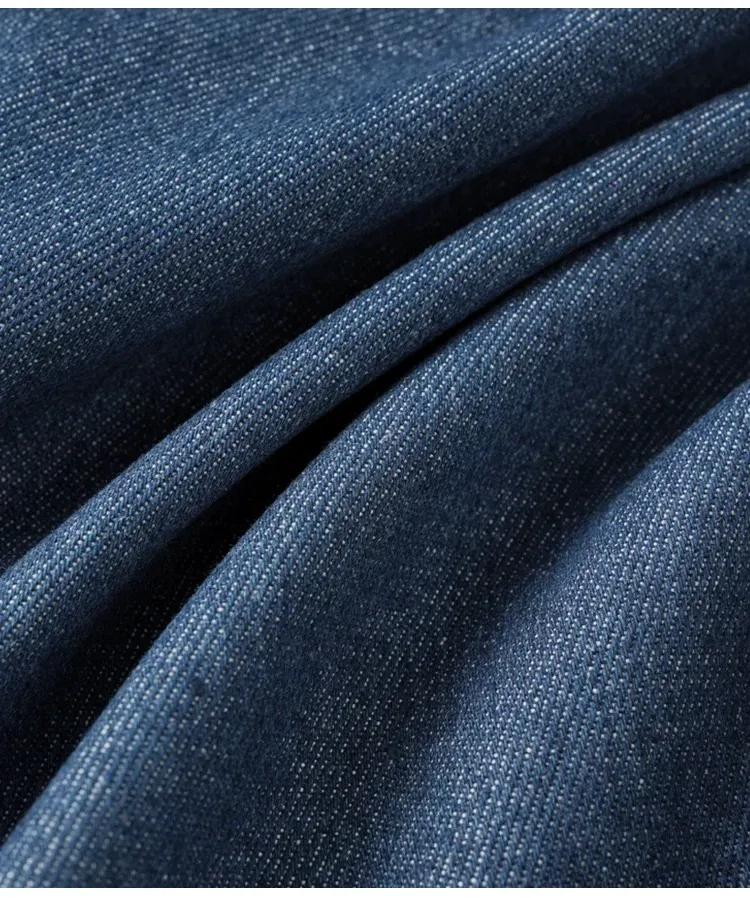Indigo Blue: Perfecting the Color with Advanced Techniques
Indigo blue has long been celebrated for its deep, vibrant hue and unparalleled versatility in the textile industry. From timeless denim styles to innovative fabric designs, indigo dye remains a cornerstone of creative expression. Beyond its aesthetic appeal, indigo blue powder is the choice for manufacturers seeking precision in color customization, eco-friendly wastewater treatment solutions, and seamless integration of mixed tones. With advances in technology and expertise, creating stunning effects with indigo dye for jeans and other textiles has never been more accessible.

Achieving the Perfect Indigo Blue Color Effect
Adjusting the color intensity and shade of indicum blue requires a blend of art and science. By manipulating variables like dye concentration, immersion time, and oxidation levels, manufacturers can produce a wide range of hues, from light sky blue to deep navy. Indigo blue powder is particularly valued for its adaptability, allowing precise adjustments that meet specific design requirements.
Modern dyeing techniques have also enabled gradient effects and unique finishes. For example, pre-wash treatments combined with indigo dye can achieve vintage aesthetics, while layering methods produce more vibrant and long-lasting tones. This versatility makes indicum blue a preferred choice for high-fashion brands and mass-market denim manufacturers alike.
Treating Indigo Blue Wastewater: Sustainability at Its Core
As environmental concerns grow, the proper treatment of wastewater generated during the dyeing process has become a key focus. Indigo dye production traditionally generates effluents containing organic compounds and pigments that require specialized treatment. Advanced filtration and bio-treatment technologies are now employed to minimize environmental impact.
Leading manufacturers prioritize sustainable practices, ensuring that indigo blue wastewater is treated to meet or exceed environmental regulations. These methods not only protect ecosystems but also enhance the reputation of indicum blue as an eco-conscious dye. Recycling water during the dyeing process is another innovation that reduces waste and resource consumption, making indigo dye for jeans a more sustainable choice for the modern fashion industry.
Indigo Blue Mixing and Matching Skills
The creative possibilities of indicum blue are virtually endless, thanks to its compatibility with other colors and materials. For bold contrasts, pairing indicum blue with bright yellows or crisp whites creates eye-catching designs. For more subtle, sophisticated looks, earthy tones like olive or beige provide a harmonious balance.
When mixing indigo dye with other dyes, maintaining consistent proportions and carefully timing the dyeing process is critical. This ensures that the final product achieves the desired tone and quality. The versatility of indigo blue powder makes it an indispensable tool for designers seeking to push the boundaries of creativity.
Why Indigo Blue Stands Out in Modern Fashion
The popularity of indigo dye for jeans is a testament to its timeless appeal. Beyond denim, indicum blue is increasingly used in jackets, shirts, and even accessories, thanks to its universal charm and adaptability. The ability to produce varying shades and finishes with indigo dye has also allowed brands to cater to diverse market preferences, from casual wear to high-end collections.
Furthermore, the durability of indigo blue powder ensures that garments maintain their color vibrancy even after multiple washes, making it a practical choice for everyday wear. Its ability to pair seamlessly with different styles and fabrics further enhances its status as a must-have in the fashion industry.
The Future of Indigo Blue: Innovation Meets Tradition
As technology advances, the potential of indicum blue continues to grow. Researchers and manufacturers are exploring new ways to enhance the dye’s properties, such as improving its lightfastness and reducing its environmental footprint. Sustainable sourcing of indigo blue powder and innovations in waterless dyeing processes are setting new standards for eco-friendly production.
At the same time, the rich history and cultural significance of indigo dye remain a source of inspiration. Its enduring popularity in traditional textiles and modern applications alike underscores its versatility and relevance. For both established brands and emerging designers, indigo dye for jeans and other products symbolizes a perfect blend of tradition and innovation.
From achieving precise color effects to treating wastewater sustainably, indicum blue offers unmatched versatility and reliability. Its adaptability in mixing and matching with other colors and its enduring appeal in the fashion industry further cement its status as a go-to dye. With advancements in sustainable practices and innovative techniques, indigo dye continues to redefine what’s possible in textile design. For manufacturers and designers looking for a dye that combines beauty, practicality, and eco-consciousness, indigo blue powder remains the ultimate choice.
-
The Timeless Art of Denim Indigo Dye
NewsJul.01,2025
-
The Rise of Sulfur Dyed Denim
NewsJul.01,2025
-
The Rich Revival of the Best Indigo Dye
NewsJul.01,2025
-
The Enduring Strength of Sulphur Black
NewsJul.01,2025
-
The Ancient Art of Chinese Indigo Dye
NewsJul.01,2025
-
Industry Power of Indigo
NewsJul.01,2025
-
Black Sulfur is Leading the Next Wave
NewsJul.01,2025

Sulphur Niger
1.Name: sulphur black; Sulfur Black; Sulphur Black 1;
2.Structure formula:
3.Molecule formula: C6H4N2O5
4.CAS No.: 1326-82-5
5.HS code: 32041911
6.Product specification:Appearance:black phosphorus flakes; black liquid

Bromo Indigo; Vat Bromo-Indigo; C.I.Vat Blue 5
1.Name: Bromo indigo; Vat bromo-indigo; C.I.Vat blue 5;
2.Structure formula:
3.Molecule formula: C16H6Br4N2O2
4.CAS No.: 2475-31-2
5.HS code: 3204151000 6.Major usage and instruction: Be mainly used to dye cotton fabrics.

Indigo Blue Vat Blue
1.Name: indigo blue,vat blue 1,
2.Structure formula:
3.Molecule formula: C16H10N2O2
4.. CAS No.: 482-89-3
5.Molecule weight: 262.62
6.HS code: 3204151000
7.Major usage and instruction: Be mainly used to dye cotton fabrics.

